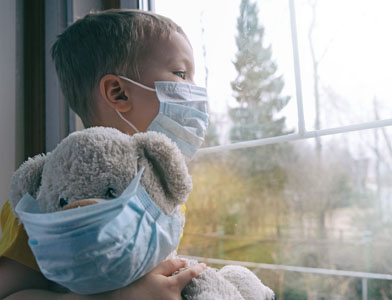What You Need to Know about Isolation and Quarantine
“Centers for Disease Control and Prevention’s updated recommendations for isolation and quarantine balance what we know about the spread of the virus and the protection provided by vaccination and booster doses. These updates ensure people can safely continue their daily lives. Prevention is our best option: get vaccinated, get boosted, wear a mask in public indoor settings in areas of substantial and high community transmission, and take a test before you gather.”
Rochelle Walensky, M.D.
CDC Director
What is the Difference Between Quarantine and Isolation?

- You quarantine when you have had close contact with someone with COVID-19. Quarantine keeps potentially sick people away from others. You don’t need to quarantine if you are up to date with your COVID-19 vaccines. You also don’t need to quarantine if you have tested positive for COVID-19 using a viral test within the last 90 days unless you develop symptoms.
- You isolate when infected with the virus, even if you don’t have symptoms. Isolation keeps someone sick or who tested positive for COVID-19 without symptoms away from others, even in their own home. People in isolation should stay home and stay in a specific “sick room” or area and use a separate bathroom if possible.
There are precautions you should take after you have had close contact with someone with COVID-19. These guidelines are constantly evolving. Please review CDC’s Recommended Isolation and Quarantine Guidelines for the latest information.
Watch CDC's video on "What's the difference between quarantine and isolation?"
The best tool we have to slow the spread of COVID-19 is vaccination. If you are not yet vaccinated and are interested in learning more about the vaccine or finding a shot near you, CareFirst has you covered.